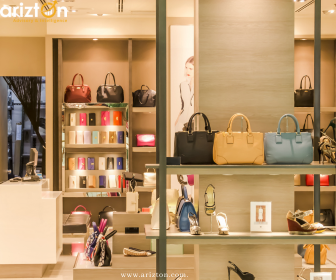How the US-China Trade War is Boosting Europe’s Luxury Fashion Market?
The escalating trade tensions between the United States and China have significantly reshaped global fashion dynamics. While many sectors grapple with uncertainty, Europe's luxury fashion market is experiencing a notable upswing, capitalizing on shifting supply chains, evolving consumer preferences, and a renewed emphasis on quality and sustainability.
Understanding the U.S.-China Trade War’s Fashion Fallout
The trade war between the two largest global economies has escalated steadily, with the U.S. in 2025 imposing up to 145% tariffs on various Chinese imports, including textiles and apparel.
These tariffs have disrupted the business models of countless fashion brands that rely on China for both production and consumption. Chinese designers, once focused on cracking the U.S. market, are now pivoting toward Europe and the Middle East, where trade conditions remain more favorable and less politically volatile.
Meanwhile, Chinese manufacturers, especially in industrial hubs like Dongguan and Shenzhen, have slowed operations. Factory owners report clients canceling orders and scaling back production plans. The Chinese government has stepped in with export insurance subsidies and worker support programs, but the slowdown has created a ripple effect throughout the global supply chain.
Europe: An Unexpected Beneficiary of Global Trade Tensions
As China and the U.S. butt heads, European luxury fashion is capitalizing on the shift in trade dynamics. European fashion houses are seizing this moment to position themselves as leaders in quality, heritage, and innovation—especially to international consumers seeking stability, ethical production, and prestige. The European luxury fashion market is projected to reach USD 85.34 billion by 2030. With key growth factors supporting its growth are sustainability, digital innovation, and HNWI demand.
Why Luxury Brands Are Turning to Europe
1.A Renewed Focus on European Craftsmanship
European countries, especially Italy and France, have long been revered for their artisanal fashion legacy. As Chinese manufacturing becomes less economically viable due to tariffs, many brands are reshoring production or expanding operations in Europe to reduce geopolitical risk.
- Italy, for instance, remains the backbone of the continent’s luxury market, known for its leather goods and tailoring.
- France dominates high-end apparel and couture, hosting global icons like Chanel and Dior.
This shift not only improves brand authenticity but also resonates with consumers looking for “Made in Italy” or “Made in France” labels, which symbolize quality and exclusivity.
2. Millennials & Gen Z Demand Sustainability
Millennials and Gen Z consumers—now one of the largest demographic of luxury buyers—are demanding more than status symbols. They want sustainably made, ethically sourced, and transparent fashion. European luxury brands have responded swiftly:
- Embracing vegan leathers, recycled fabrics, and low-impact production methods
- Launching eco-friendly capsule collections
- Investing in supply chain transparency tools such as blockchain authentication
These shifts are not just PR moves; they're strategic realignments that place European fashion at the forefront of the green luxury movement.
3.Tech-Forward Shopping Experiences
Luxury fashion in Europe is also leveraging technology to create immersive, high-end customer experiences online.
- Gucci and Burberry have adopted augmented reality (AR) features in their mobile apps, allowing shoppers to try on accessories and visualize products in real time.
- Dior is now producing virtual fashion shows, enabling customers worldwide to engage with collections from the comfort of their homes.
With consumers growing more tech-savvy and less inclined to visit brick-and-mortar stores, this digital innovation is ensuring Europe remains relevant in the new luxury landscape.
4.Resale & Circular Luxury on the Rise
As global consumers embrace second-hand luxury, Europe’s resale market is booming. Platforms like Vestiaire Collective and The RealReal are partnering with luxury brands to ensure product authentication and offer certified pre-owned (CPO) programs. Also, European brands like Chloé and Stella McCartney are circularly leading the charge, encouraging customers to trade in pre-loved items. The resale boom ties directly into sustainability trends and positions European brands as both eco-conscious and economically accessible to a wider audience.
5.High Net-Worth Individuals Fuel Market Expansion
The number of high-net-worth individuals (HNWIs) in Europe is steadily rising, particularly in Germany, Switzerland, and the UK. These consumers seek personalized, exclusive experiences, prompting brands to:
Launch limited-edition collections
Offer bespoke tailoring and private shopping experiences
Host exclusive invite-only runway shows
With UHNWIs (Ultra-High net worth individuals) spending lavishly on luxury fashion and lifestyle, brands are tailoring services to deliver maximum exclusivity and personalization.
Brand Examples: Seizing the Moment
- Dolce & Gabbana, April 2024, launched its Dolce & Gabbana Casa lifestyle brand at Milan Design Week, demonstrating how fashion brands are diversifying into home luxury to extend their market reach. At the 2025 Milan Design Week, Dolce & Gabbana once again demonstrated its expertise in translating high-fashion codes into interiors.
- HUGO BLUE, launched by Hugo Boss, focuses on youth culture and digital engagement, incorporating AR and Snapchat-based interactions to draw Gen Z.
THE FUTURE: WILL EUROPE STAY ON TOP?
Given the current trajectory, all signs point to continued growth in the European luxury sector. However, maintaining momentum will require continued investment in technology and digital retail and a deepened commitment to sustainability. Trade tensions may eventually subside, but the consumer behaviors and brand strategies they’ve accelerated are here to stay.
The US-China trade war has brought instability to global fashion supply chains—but it has also created an unprecedented opportunity for Europe’s luxury fashion market to shine. By focusing on authenticity, sustainability, innovation, and exclusivity, European luxury brands are redefining the high-end fashion experience for today’s conscious and connected consumers.
